Introduction
Often, you will be asked to solve problems involving geometric relationships or other shapes. For real-world problems, those geometric relationships mostly involve measurable attributes, such as length, area, or volume.
Sometimes, those problems will involve the perimeter or circumference, or the area of a 2-dimensional figure.
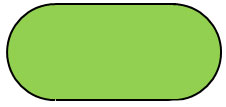
For example, what is the distance around the track that is shown? Or, what is the area of the portion of the field that is covered with grass?
You may also see problems that involve the volume or surface area of a 3-dimensional figure. For example, what is the area of the roof of the building that is shown?
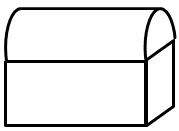
Another common type of geometric problem involves using proportional reasoning.
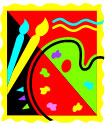
For example, an artist created a painting that needs to be reduced proportionally for the flyer advertising an art gallery opening. If the dimensions of the painting are reduced by a factor of 40%, what will be the dimensions of the image on the flyer?
In this resource, you will investigate ways to apply a problem-solving model to determine the solutions for geometric problems like these.
A basic problem solving model contains the following four steps:
|
Step 1: Read, understand, and interpret the problem.
|
|
Step 2: Make a plan.
|
|
Step 3: Implement your plan.
|
|
Step 4: Evaluate your answer.
|
Solving Problems Using Perimeter and Circumference
You may recall that the perimeter of an object is the distance around the edge of the object. If the object contains circles, then you may need to think about the circumference of a circle, which is the perimeter of the circle.
Problem
A tire on a passenger car has a diameter of 18 inches. When the tire has rotated 5 times, how far will the car have traveled?
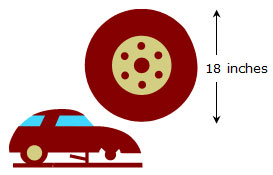
Step 1: Read, understand, and interpret the problem.
- What information is presented?
- What is the problem asking me to find?
- What information may be extra information that I do not need?
Step 2: Make a plan.
- Draw a picture.
- Use a formula: Which formula do I need to use?
(Hint: Look at your Mathematics Reference Materials)
Step 3: Implement your plan.
- What formulas do I need?
- What information can I interpret from the diagram, table, or other given information?
- Solve the problem.
Step 4: Evaluate your answer.
- Does my answer make sense?
- Did I answer the question that was asked?
- Are my units correct?
Practice
A cylindrical barrel with a diameter of 20 inches is used to hold fuel for a barbecue cook off. The chef rolls the barrel so that it completes 7 rotations. How many feet did the chef roll the barrel?
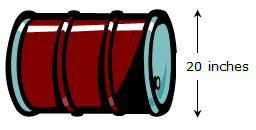
Solving Problems Using Area and Surface Area
You may also encounter real-world geometric problems that ask you to find the area of 2-dimensional figures or the surface area of 3-dimensional figures. The key to solving these problems is to look for ways to break the region into smaller figures of which you know how to find the area.
Problem
Mr. Elder wants to cover a wall in his kitchen with wallpaper. The wall is shown in the figure below.
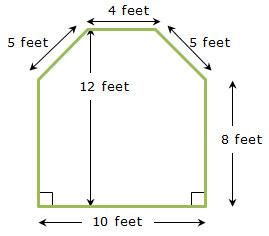
If wallpaper costs $1.75 per square foot, how much will Mr. Elder spend on wallpaper to completely cover this wall, excluding sales tax?
To solve this problem, let's use the 4-step problem solving model.
Step 1: Read, understand, and interpret the problem.
- What information is presented?
- What is the problem asking me to find?
- What information may be extra information that I do not need?
Step 2: Make a plan.
- Draw a picture.
Step 3: Implement your plan.
- What formulas do I need?
- What information can I interpret from the diagram, table, or other given information?
- Solve the problem.
Step 4: Evaluate your answer.
- Does my answer make sense?
- Did I answer the question that was asked?
- Are my units correct?
Practice
Mrs. Nguyen wants to apply fertilizer to her front lawn. A bag of fertilizer that covers 1,000 square feet costs $18. How many bags of fertilizer will Mrs. Nguyen need to purchase?
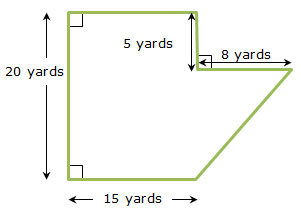
Surface Area Problem
After a storm, the Serafina family needs to have their roof replaced. Their house is in the shape of a pentagonal prism with the dimensions shown in the diagram.
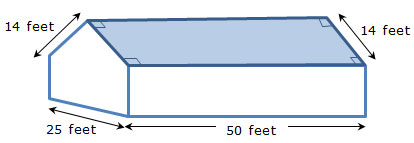 A roofing company gave Mr. Serafina an estimate based on a cost of $2.75 per square foot to replace the roof. How much will it cost the Serafina family to have their roof replaced?
A roofing company gave Mr. Serafina an estimate based on a cost of $2.75 per square foot to replace the roof. How much will it cost the Serafina family to have their roof replaced?
To solve this problem, let's use the 4-step problem solving model.
Step 1: Read, understand, and interpret the problem.
- What information is presented?
- What is the problem asking me to find?
- What information may be extra information that I do not need?
Step 2: Make a plan.
- Draw a picture.
Step 3: Implement your plan.
- What formulas do I need?
- What information can I interpret from the diagram, table, or other given information?
- Solve the problem.
Step 4: Evaluate your answer.
- Does my answer make sense?
- Did I answer the question that was asked?
- Are my units correct?
Practice
To match their new roof, Mrs. Serafina decided to have both pentagonal sides of their house covered in aluminum siding. Their house is in the shape of a pentagonal prism with the dimensions shown in the diagram.

A contractor gave Mrs. Serafina an estimate based on a cost of $3.10 per square foot to complete the aluminum siding. How much will it cost the Serafina family to have the aluminum siding installed?
Solving Problems Using Proportionality
Proportional relationships are another important part of geometric problem solving.
A woodblock painting has dimensions of 60 centimeters by 79.5 centimeters. In order to fit on a flyer advertising the opening of a new art show, the image must be reduced by a scale factor of 1/25.
What will be the final dimensions of the image on the flyer?
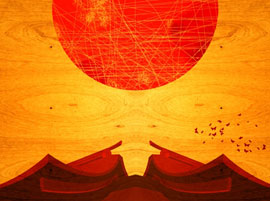
Measuring Problem
For summer vacation, Jennifer and her family drove from their home in Inlandton to Beachville. Their car can drive 20 miles on one gallon of gasoline. Use the ruler to measure the distance that they drove to the nearest 1/4 inch, and then calculate the number of gallons of gasoline their car will use at this rate to drive from Inlandton to Beachville.
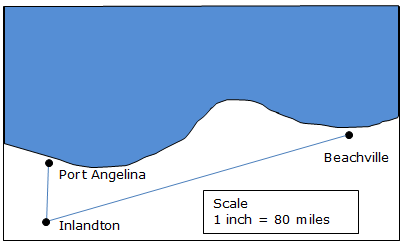
Step 1: Read, understand, and interpret the problem.
- What information is presented?
- What is the problem asking me to find?
- What information may be extra information that I do not need?
Step 2: Make a plan.
- Draw a picture.
Step 3: Implement your plan.
- What formulas do I need?
- What information can I interpret from the diagram, table, or other given information?
- Solve the problem.
Step 4: Evaluate your answer.
- Does my answer make sense?
- Did I answer the question that was asked?
- Are my units correct?
Practice #1
A blueprint for a rectangular tool shed has dimensions shown in the diagram below.
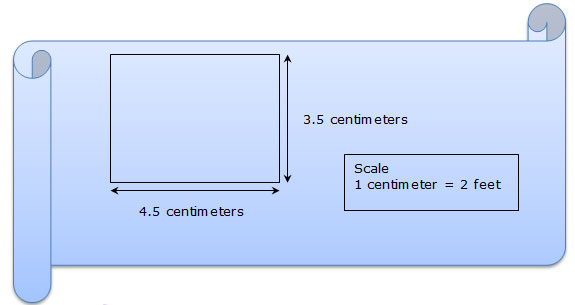
Todd is using this blueprint to build a tool shed, and he wants to surround the base of the tool shed with landscaping timbers as a border. How many feet of landscaping timbers will Todd need?
Practice #2
A scale model of a locomotive is shown. Use the ruler to measure the dimensions of the model to the nearest 1/4 inch, and then calculate the actual dimensions of the locomotive.
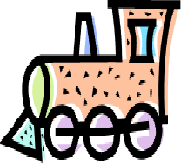
Scale: 1 inch = 5 feet
Summary
Solving geometric problems, such as those found in art and architecture, is an important skill. As with any mathematical problem, you can use the 4-step problem solving model to help you think through the important parts of the problem and be sure that you don't miss key information.
There are a lot of different applications of geometry to real-world problem solving. Some of the more common applications include the following:
Perimeter or Circumference Applications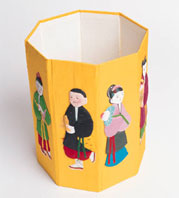
What is the perimeter of the base of the cup, if the cup is in the shape of an octagonal prism?
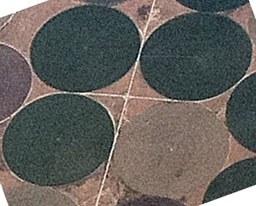 In West Texas, farmers use circular sprinklers that pivot around a center point to irrigate their crops. From the air, you can see distinct circles from the resulting vegetation. If there are four sprinklers anchored in a field and each sprinkler extends 100 feet from the pivot point, how much area does the farmer irrigate?
In West Texas, farmers use circular sprinklers that pivot around a center point to irrigate their crops. From the air, you can see distinct circles from the resulting vegetation. If there are four sprinklers anchored in a field and each sprinkler extends 100 feet from the pivot point, how much area does the farmer irrigate?
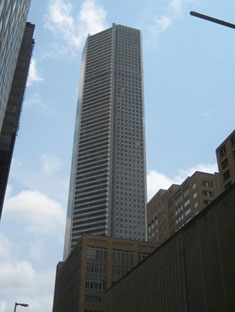 Surface Area Applications
Surface Area Applications
The JP Morgan Chase Bank Tower in downtown Houston, Texas, is one of the tallest buildings west of the Mississippi River. It is in the shape of a pentagonal prism. If 40% of each face is covered with glass windows, what is the amount of surface area covered with glass?
 Proportional Reasoning
Proportional Reasoning
The dimensions of Vincent van Gogh's Starry Night are 29 inches by inches. If a print reduces these dimensions by a scale factor of 30%, what will be the dimensions of the print?